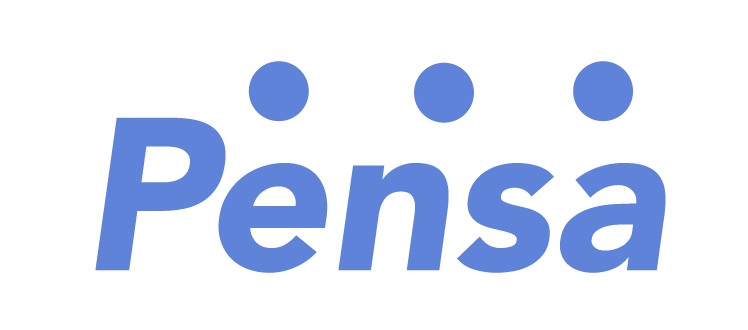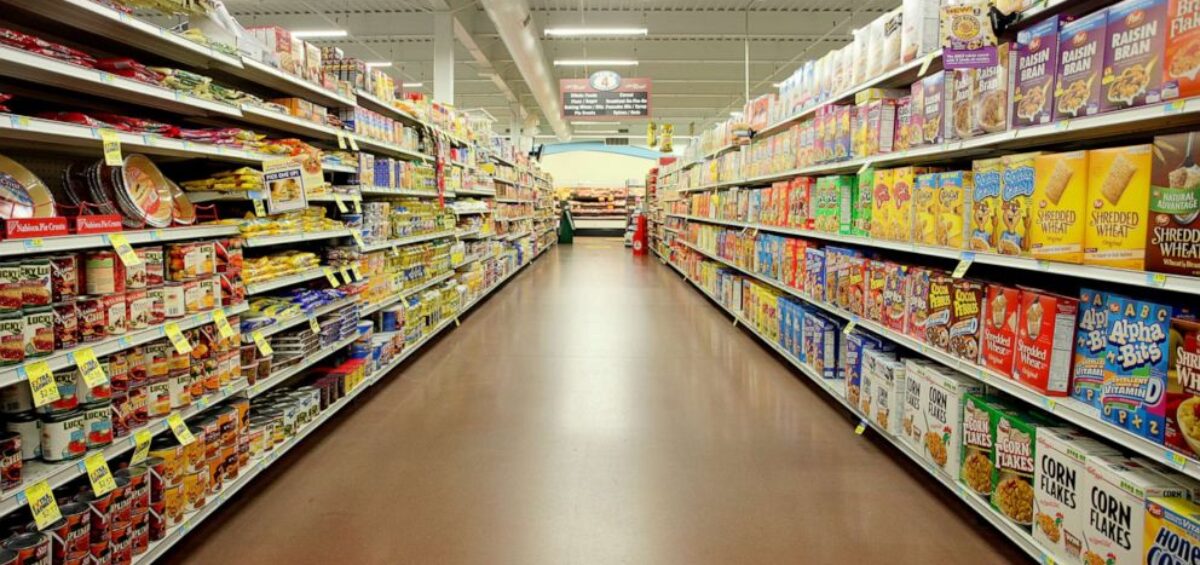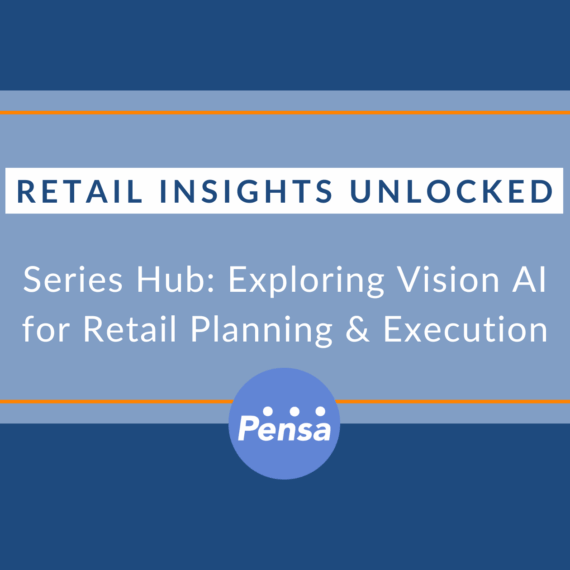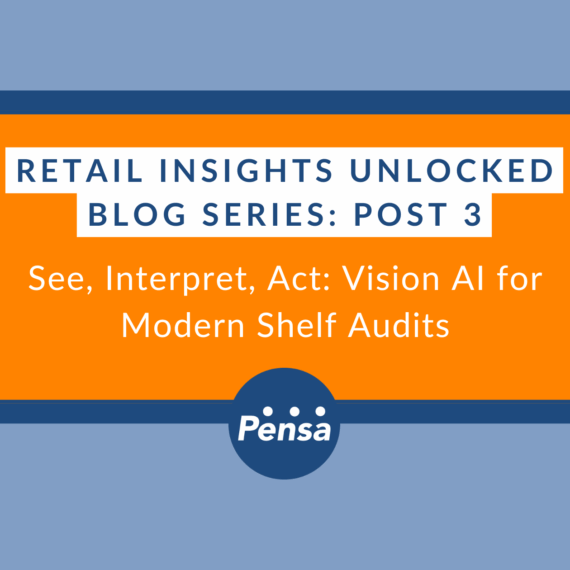A Two Trillion Dollar Problem
The Consumer Packaged Goods (CPG) industry is one of many that has been whipsawed by macro-economic forces over the past several years and no place is the impact of that disruption felt more acutely than in the supply chain.
I’ve seen estimates that inventory supply chain distortion is now a $2T problem, with $1.2T related to out of stocks and $800B related to overstocks.
In a recent survey by supply chain management leader and Pensa partner Blue Yonder, 68% of supply chain executives said they are constantly responding to high-impact disruptions and 67% said they do not have sufficient time to recover from one disruption to the next.
For CPG brands, margin pressure and fleeting customer loyalty put an even sharper emphasis on the ability of the supply chain to deliver at the “moment of truth” when the product goes into a shopping cart.
In other words, to grow and expand consumer relationships that fuel profitable growth, a CPG product needs to be present on the physical or digital shelf and available for sale (or fulfillment) to meet the shopper’s expectations.
The lack of product availability is shocking. In a recent Retail Insights survey of U.S. grocery shoppers, 78% of respondents said they had experienced out-of-stocks in brick-and-mortar stores during the past 12 months, while 73% reported the same issue online.
Not being available for sale when and where a shopper expects it, is a missed sale today (for both CPG brand and retailer) that may result in brand switching and loss of more significant lifetime customer value.
The business imperative of improving CPG supply chain operations is reflected in a recent Consumer Goods Technology report where demand forecasting and inventory planning ranked as top areas of analytics focus for CPG companies.
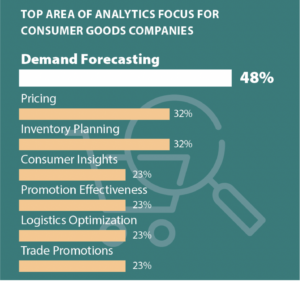
Source: CGT, RIS News, 2023 Retail and Consumer Goods Analytics Study
It’s intuitive that a CPG supply chain that ensures products are available for sale when and where shoppers want them is of paramount importance for sustainable growth. So, why is delivering against that intuition so challenging?
Changing the CPG Demand Forecasting Paradigm
A long standing CPG industry practice has been to use historical point of sales (POS) data to predict demand. A slightly more sophisticated approach is to use a combination of POS data and perpetual inventory data to fuel demand planning algorithms.
According to a recent Category Management Association blog authored by Blue Yonder, while CPG companies achieve on-time, in-full (OTIF) delivery rates of 93.2% to retailers, they’re only achieving on-shelf availability rates of 75.4%. There’s a big disparity somewhere between the delivery of a product to a retailer and the availability of that product on-shelf to the consumer for purchase.
The blog highlights the flaws in legacy CPG demand forecasting approaches. A demand forecast based upon shipments to a store misses the detail of what’s actually happening on the shelf, if products are stocked correctly or if products have even made it out of back-store inventory onto the shelf.
Forecasting based upon POS data can also be misleading as POS is typically in arrears, fails to compensate for checkout errors or drift, and as the Blue Yonder blog highlights, misses the trade-offs made at the shelf by shoppers due to stockouts.
Consumption-based forecasting is proposed as a significantly more accurate alternative to legacy demand forecasting models that will ultimately improve on-shelf product availability. In other words, using a SKU-level by store understanding of actual full category shelf inventory conditions (including competitive and private label SKUs) to ensure the right products go to the right places at the right time to optimally meet shopper demand.
Strengthening the CPG demand forecast model’s weakest link
Technology innovation is driving improved performance throughout the CPG supply chain ecosystem delivering speed, accuracy and efficiency previously unavailable.
Currently fueling much of this innovation is Artificial Intelligence. For example, the recent Wall Street Journal article Retailers Are Turning to AI to Get Smarter About Inventory expounds on how retailers are refining their “longtime practice of using internal historical sales data to predict consumer demand” with AI-driven forecasting models providing retailers “a forecast at a granularity and accuracy they were not able to produce before”.
Similarly, much focus has been placed on applying AI to drive speed, accuracy and efficiency throughout CPG demand forecasting models, from sourcing and procurement, to transportation and logistics, to warehousing and distribution. The many inputs needed to optimize forecasting across this intricate web of players and processes have now been fully digitized to enable AI-driven improvements with one notable exception, shelf inventory.
Advancements in computer vision and AI technology provide a path to close that exception and benefit from fully-digitized CPG forecasting. Computer vision (broadly referred to as Image Recognition) and self-learning AI replaces slow, dated, costly and inaccurate manual shelf-inventory inputs from the store aisle with fast, immediate, cost-effective, highly-accurate and granular, full category SKU-level shelf inventory data.
What we see at Pensa is that CPG brands that embrace consumption-based forecasting achieve demand forecast accuracy that’s 30% more accurate than using POS data. This higher accuracy translates into sales increases of up to 12%.
If you are a CPG brand looking for advantage in today’s uber-competitive market, now might be the time to strengthen the weak link in your forecasting model.
This article is by Tim Whiting, Vice President of Marketing and Partnerships at Pensa Systems.
